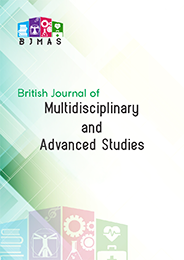The Socio-Cultural Aspects of Coffee Production in Southwestern Ethiopia: An Overview
Keywords:
Coffee, Awraja, Buna Qalaa, Coccee, District, Farmers, Production, SafuuAbstract
This paper primarily focuses on the socio-cultural aspects of coffee production in Southwestern Ethiopia. The paper deals with the general review of coffee origin, expansion, its socio-cultural role and it asses the life of coffee growers. Even though there are works that done on coffee, most of them are focus on the economic and agricultural aspects of coffee production and marketing. The attention given for the socio-cultural aspect is very little. Therefore, this work tries to fill this gap that left by other written materials so far and contributes something in enriching the Socio- Cultural role of Coffee. The paper deals with the general views of the origin and distribution of coffee, its production and the socio-cultural contributions of coffee for local people of the region and to the country as a whole. For the historical root of coffee and its discovery, there is no clear direction. Still it is a controversial one among different scholars. In southwestern part there are many local areas are considered as origin of coffee. The former Ennarya region of Limmu Awraja of Gomma district of Coccee Guddaa kebele at a site called ‘katta muuduu ga’a is said to be the historical root of coffee Arabica. For the expansion of coffee Arabica there are different arguments. It is believed that it was during the Oromo expansion of the16th century that coffee spreading out in Ethiopia regions. Later, it was probably long distance Oromo merchants of the 19th century who disseminated the plant. It is also believed that coffee spread to the rest of the world from these local areas by Arab merchants and the European colonizers first saw the plant and spread to other parts of the globe. When and How first human beings domesticated coffee plant is also another controversial issue among scholars. Different scholars attached the issue to different ethnic groups. It was around 10th century A.D that coffee ball was first practiced by Oromo people and used for journeys. Art of making coffee is a central element of socio-cultural practices of many societies. When many researchers forget the role of coffee ritual practice and few individuals are attempted to study the issue. The coffee ceremony is an opportunity for social networking and sometimes called as school of socialization. It is during this occasion that elders pass the norms and values of the society ( Safuu) such as proverbs, stories, as well as thoughts and customs of the community to the children. Coffee used during different ritual practices such as child birth, birth of a calf, sacrifice for the spirit of a dead, ateetee ritual, moggaasa and baallii (Taking and Giving power of Gadaa). It also serves as agents of Ethnic interaction in coffee producing areas. Many communities migrated from their homeland to coffee producing areas annually. But pushing factors are not well studied. Additionally, the impact of coffee production on coffee farmers and the benefit they obtained from coffee production is not received enough attention. They work day and night but obtained little.
Downloads
Downloads
Published
Versions
Issue
Section
License

This work is licensed under a Creative Commons Attribution-NonCommercial-NoDerivatives 4.0 International License.











